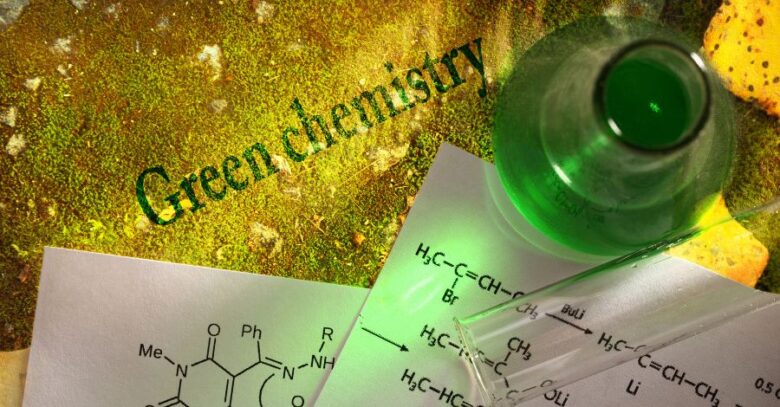The dynamic relationship between industry and the environment has seen drastic changes in recent decades. In the quest for sustainable industrial practices, we’ve seen the emergence of new scientific concepts that challenge the status quo.
One such concept is green chemistry, an area that brings a fresh perspective to the chemical industry by promoting environmentally friendly chemical processes.
This shift towards sustainable practices not only benefits the environment, but also aids in refining process safety measures in industries, making operations safer and more efficient.
Understanding Green Chemistry
Green chemistry, also known as sustainable chemistry, is a scientific approach aimed at designing chemical products and processes that reduce or eliminate the use or generation of hazardous substances.
It’s not simply about making the chemical industry “greener” but about creating a systemic shift towards sustainability.
Green chemistry seeks to minimize the environmental footprint of chemical processes, reduce waste, and promote the use of efficient, sustainable materials and processes.
Principles of Green Chemistry
Green chemistry, also known as sustainable chemistry, is defined by a set of twelve principles that promote environmental sustainability in the chemical industry. These principles were established by Paul Anastas and John Warner, two pioneers in the field.
The first principle encourages the prevention of waste, rather than treating it after it’s produced. It’s more cost-effective and environmentally friendly to avoid waste generation in the first place.
The second principle promotes the design of chemical syntheses to maximize the incorporation of all materials used into the final product, reducing waste and increasing efficiency.
The following principles recommend the use of safer and more sustainable substances. For instance, the third principle emphasizes the use of synthetic methods that generate substances posing little toxicity to human health and the environment. The fourth principle advises designing chemical products to preserve efficacy while reducing toxicity.
The fifth principle promotes the use of safe, benign solvents and auxiliaries, and the sixth suggests using renewable raw materials whenever technically and economically viable.
Green Chemistry and Process Safety: The Connection
Green chemistry and process safety are two critical facets of the chemical industry that intersect in several key ways. Both disciplines seek to prevent hazardous situations and minimize risk throughout the lifecycle of chemical processes.
Green chemistry aims to reduce or eliminate the generation of hazardous substances, whereas process safety focuses on designing and operating chemical processes in a manner that prevents accidents and mitigates their effects.
Integrating the principles of green chemistry into process safety can bring about significant benefits. By designing processes that are inherently less hazardous, companies can lessen the risks associated with chemical accidents such as fires, explosions, and releases of toxic materials.
Moreover, green chemistry principles encourage efficiency and waste reduction, which can contribute to safer, more streamlined operations.
While process safety management focuses on controlling and mitigating risks, green chemistry goes one step further, addressing the source of those risks. This approach, therefore, represents a proactive, rather than reactive, strategy for risk management, promoting a more sustainable and inherently safer chemical industry.
The Role of Green Chemistry in Hazard Reduction
Green chemistry contributes to hazard reduction in several ways. One of the key ways is through the design of safer chemicals that, while retaining their efficacy, have reduced toxicity or are less prone to causing accidents like explosions or leaks.
It also advocates for the use of safer solvents and auxiliaries, as well as energy-efficient processes that lessen the risks of hazardous incidents.
In addition, by advocating for waste reduction at the source, green chemistry helps minimize the hazards associated with waste management and disposal.
Case Studies: Green Chemistry in Action
Several companies have already reaped the benefits of incorporating green chemistry principles into their operations. For instance, a giant pharmaceutical industry developed a new synthesis for an antiviral drug that significantly reduced waste, improved yield and safety, and saved them over $30 million annually.
Another big company, developed a new method to produce propylene oxide that eliminates the need for chlorinated intermediates, thereby reducing production hazards.
These cases highlight how green chemistry can drive both economic and safety benefits, showing its potential for wide-scale adoption across the industry.
Advantages of Incorporating Green Chemistry in Process Safety
Incorporating green chemistry in process safety comes with several advantages. Not only does it decrease the risk of accidents and spills by utilizing less hazardous substances, but it also leads to more efficient processes, reducing energy consumption and waste.
The practice aligns with regulatory trends towards cleaner production and can contribute to a company’s image as an environmentally responsible entity, enhancing its social license to operate.
Furthermore, it can provide a competitive edge, as sustainable practices are increasingly seen as valuable by customers and investors.
Challenges in Adopting Green Chemistry
Despite the many advantages, adopting green chemistry also presents challenges. Companies may face difficulties in redesigning well-established processes, and implementing new technologies may require significant investment.
The availability of green alternatives for certain hazardous chemicals may also be limited.
Moreover, a paradigm shift is needed for companies to move from traditional hazard control strategies to proactive hazard elimination strategies. This involves changes at multiple levels, including corporate culture, education, and regulatory frameworks.
The Future of Green Chemistry and Process Safety
Looking forward, green chemistry and process safety will continue to intersect more and more. The increasing awareness of environmental issues, the development of new technologies, and the pressure from regulators, consumers, and investors alike will drive the further incorporation of green chemistry principles into process safety.
This will not only help companies to mitigate risks more effectively but also drive innovation and sustainability in the chemical industry.
Through shared learning and continuous improvement, the integration of these two fields will shape the safer, greener future of chemical processes.
Conclusion
The intersection of green chemistry and process safety represents a promising approach to managing risks and promoting sustainability in the chemical industry. These two fields, when combined, offer comprehensive solutions that aim to eliminate hazards at the source, rather than merely controlling them.
Companies that incorporate green chemistry principles into their process safety strategies are positioned to benefit from reduced risk, increased efficiency, and enhanced reputation, among other advantages.
However, the adoption of green chemistry is not without challenges, such as the need for investment in technology and process redesign, and the paradigm shift required from traditional hazard control to proactive hazard elimination. As green chemistry becomes more integral to process safety, companies will need to navigate these challenges and work towards developing effective, sustainable solutions.
Moreover, there is a need for ongoing education, research, and development to advance the application of green chemistry principles in process safety.
The future of the chemical industry will be shaped by the continued integration of green chemistry and process safety. This will not only drive improvements in risk management but also fuel innovation and sustainability, contributing to a safer and more sustainable future for the industry.
As we move forward, it will be essential for all stakeholders to collaborate and share knowledge, to harness the full potential of this powerful synergy.




